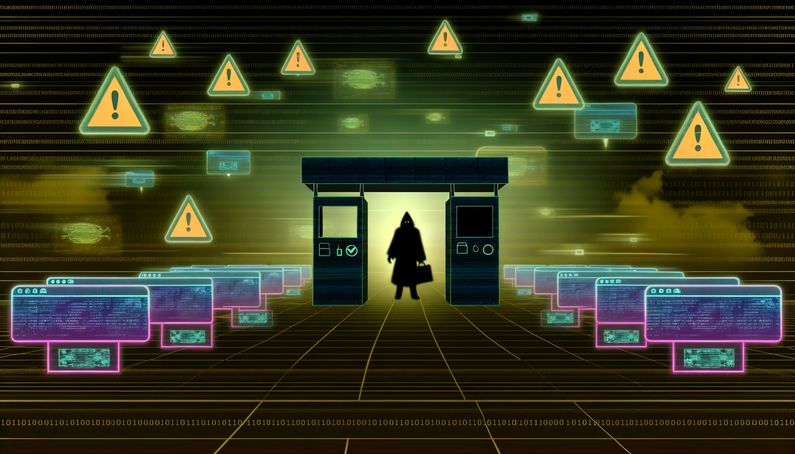
The Toll Payment Text Scam: A Modern Cybersecurity Threat
Imagine receiving a text message from what appears to be a trusted toll agency, urgently demanding payment for an unpaid toll. This is the reality for thousands of individuals caught in the resurgence of the toll payment text scam, a sophisticated phishing operation that poses a significant challenge in cybersecurity. Scammers, posing as well-known toll agencies like E-ZPass and FasTrak, send messages urging immediate payment to avoid penalties. These messages often contain links to phishing websites that mimic official sites, making it difficult for victims to discern their authenticity (BleepingComputer).
The scam’s sophistication is bolstered by advanced phishing kits available on phishing-as-a-service platforms, allowing even those with minimal technical skills to launch large-scale attacks (Help Net Security). By exploiting encrypted messaging services like iMessage and RCS, scammers bypass traditional anti-spam filters, increasing their reach and effectiveness (BleepingComputer). This scam’s adaptability and the psychological manipulation tactics it employs underscore the ongoing battle between cybercriminals and cybersecurity professionals.
The Nature of the Scam
Tactics Employed by Scammers
The toll payment text scam utilizes a variety of tactics to deceive victims into divulging personal and financial information. One of the primary methods involves sending unsolicited text messages that appear to be from legitimate toll agencies such as E-ZPass, FasTrak, or The Toll Roads. These messages often contain urgent language, claiming that the recipient owes unpaid tolls and must take immediate action to avoid penalties. The messages typically include a link that directs the recipient to a phishing website designed to mimic the appearance of a genuine toll agency site (BleepingComputer).
The sophistication of these scams has increased with the use of advanced phishing kits that replicate the look and feel of legitimate websites, making it difficult for victims to discern the difference. These kits are often sold on phishing-as-a-service platforms like Lucid and Darcula, which enable cybercriminals to launch large-scale phishing campaigns without extensive technical expertise (Help Net Security).
Targeting and Delivery Methods
Scammers employ various delivery methods to maximize the reach and effectiveness of their campaigns. The use of encrypted messaging services such as iMessage and RCS allows scammers to bypass traditional anti-spam filters, increasing the likelihood that their messages will reach potential victims. This approach also reduces the costs associated with standard SMS delivery, enabling scammers to send large volumes of messages without incurring significant expenses (BleepingComputer).
The messages are often sent from random or spoofed phone numbers, making it difficult for recipients to trace the origin of the scam. Additionally, the use of multiple domains registered by cybercriminals further complicates efforts to shut down the operation. The FBI’s Internet Crime Complaint Center (IC3) has received over 2,000 complaints related to these fraudulent toll payment messages, highlighting the widespread impact of the scam (gHacks Tech News).
Psychological Manipulation Techniques
The success of the toll payment text scam relies heavily on psychological manipulation techniques. Scammers often use fear and urgency to compel victims to act quickly without thoroughly evaluating the legitimacy of the message. By creating a sense of immediate threat, such as the risk of fines or legal action for unpaid tolls, scammers increase the likelihood that recipients will click on the malicious link and provide their personal information (USA Today).
Furthermore, the messages are crafted to appear as though they are from a trusted source, leveraging the credibility of well-known toll agencies to gain the victim’s trust. This tactic is a common element of social engineering attacks, where the attacker exploits human psychology rather than technical vulnerabilities to achieve their goals (IBM).
Evolution and Adaptation of the Scam
The toll payment text scam has evolved over time, adapting to new technologies and countermeasures implemented by authorities and service providers. Initially, the scam primarily targeted SMS users, but with the rise of encrypted messaging services, scammers have expanded their reach to include platforms like iMessage and RCS. This evolution demonstrates the adaptability of cybercriminals in response to changing technological landscapes and the ongoing challenge of combating such threats (Krebs on Security).
The use of artificial intelligence (AI) to enhance the realism of phishing messages is another notable development. AI-driven tools can generate more convincing and personalized messages, increasing the likelihood of success. This trend underscores the need for continuous vigilance and adaptation in cybersecurity practices to counter increasingly sophisticated threats (NorthJersey.com).
Impact and Response
The impact of the toll payment text scam is significant, affecting thousands of individuals across the United States. Victims who fall for the scam may suffer financial losses, identity theft, and compromised personal information. The widespread nature of the scam has prompted responses from various government agencies and toll service providers, who have issued warnings and guidelines to help individuals protect themselves from such attacks (USA Today).
Authorities recommend several precautionary measures to mitigate the risk of falling victim to smishing attacks. These include avoiding clicking on links in unsolicited text messages, verifying the authenticity of payment requests through official channels, and reporting suspicious messages to appropriate authorities. By raising awareness and promoting best practices, it is possible to reduce the effectiveness of these scams and protect individuals from harm (MalwareTips).
Final Thoughts
The toll payment text scam exemplifies the dynamic nature of cyber threats and the continuous evolution of phishing tactics. As scammers leverage new technologies and platforms, such as AI and encrypted messaging, the challenge for cybersecurity professionals intensifies. The scam’s impact is profound, with thousands of individuals affected and significant financial and personal data losses reported. Authorities and toll service providers have responded by issuing warnings and guidelines to help individuals protect themselves (USA Today).
To combat these threats, it is crucial for individuals to remain vigilant and informed about the latest phishing tactics. By understanding the psychological manipulation techniques used by scammers and verifying the authenticity of payment requests through official channels, individuals can better protect themselves from falling victim to such scams. The ongoing adaptation of cybercriminals highlights the need for continuous innovation and vigilance in cybersecurity practices (MalwareTips).
References
- BleepingComputer. (2025). Toll payment text scam returns in massive phishing wave. https://www.bleepingcomputer.com/news/security/toll-payment-text-scam-returns-in-massive-phishing-wave/
- Help Net Security. (2025). Electronic toll collection phishing. https://www.helpnetsecurity.com/2025/04/03/electronic-toll-collection-phishing/
- gHacks Tech News. (2025). FBI issues new alert over phishing SMS scam targeting highway toll customers. https://www.ghacks.net/2025/03/26/fbi-issues-new-alert-over-phishing-sms-scam-targeting-highway-toll-customers/
- USA Today. (2025). Scam text message tolls. https://www.usatoday.com/story/money/2025/03/18/scam-text-message-tolls/82499092007/
- IBM. (2025). Toll road scam smishing texts. https://www.usatoday.com/story/news/nation/2025/03/12/toll-road-scam-smishing-texts/82318084007/
- Krebs on Security. (2025). Chinese innovations spawn wave of toll phishing via SMS. https://krebsonsecurity.com/2025/01/chinese-innovations-spawn-wave-of-toll-phishing-via-sms/
- NorthJersey.com. (2025). E-ZPass text scam: EZPass toll road text scam, EZDriveMA spear phishing unpaid toll payment Apple Pay. https://www.northjersey.com/story/news/2025/04/02/e-zpass-text-scam-ezpass-toll-road-text-scam-ezdrivema-spear-phishing-unpaid-toll-payment-apple-pay/82775537007/
- MalwareTips. (2025). Toll enforcement authority scam texts. https://www.malwaretips.com/blogs/toll-enforcement-authority-scam-texts/



